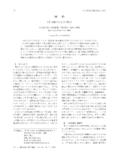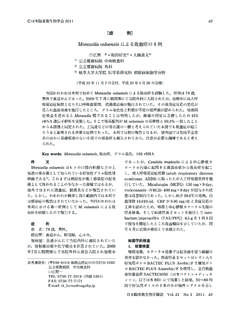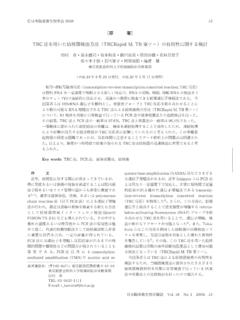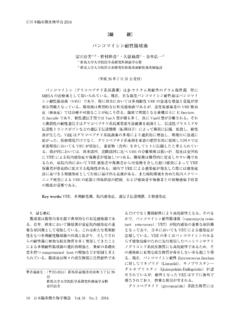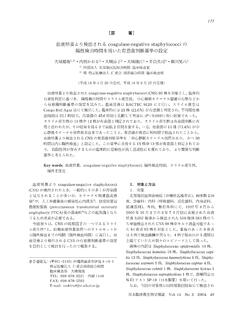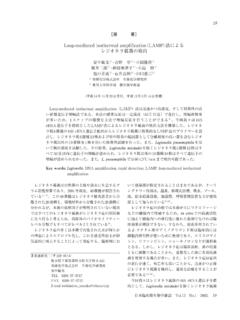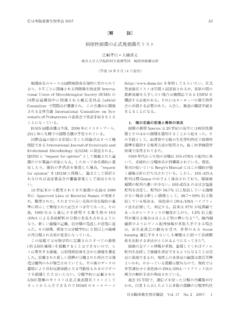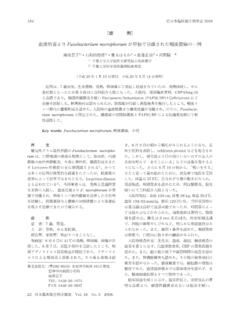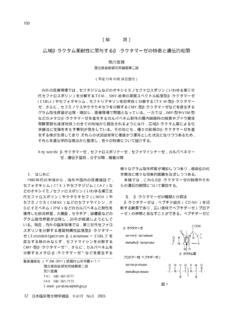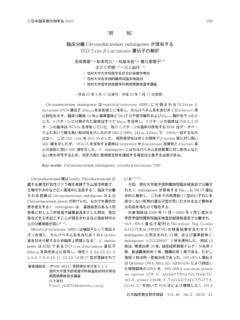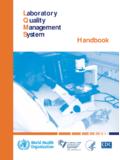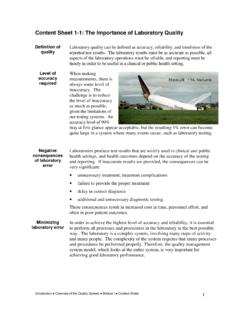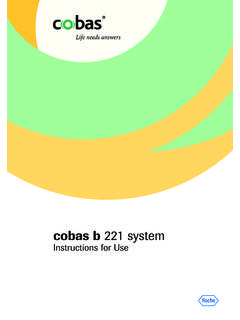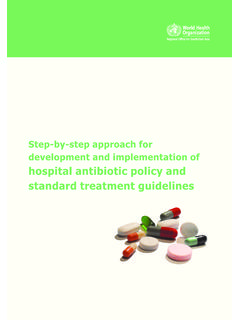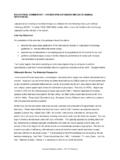Transcription of CLSI A One Health Perspective on Susceptibility …
1 1 CLSI A One Health Perspective on Susceptibility TestingDr. Jeffrey L. Watts, PhD, RM (NRCM), M (ASCP)Director, External Innovation Anti-InfectivesZoetis, Inc2 WHAT IS ONE Health ?One Health Initiative The One Health concept is a worldwide strategy for expanding interdisciplinary collaborations and communications in all aspects of Health care for humans, animals and the environment. CDC The goal of One Health is to encourage the collaborative efforts of multiple disciplines-working locally, nationally, and globally-to achieve the best Health for people, animals, and our One Health is the integrative effort of multiple disciplines working locally, nationally, and globally to attain optimal Health for people, animals, and the environment.
2 USDA The Health of animals, people and the environment is connected. The "One Health " approach is the collaborative effort of the human Health , veterinary Health and environmental Health communities. 3 The world's total population is expected to exceed 9 billion by 2050 and will require the food supply to our population expands, the contact between human and wild animal habitats increases, introducing the risk of exposure to new viruses, bacteria and other disease-causing human-animal bond continues to grow throughout is estimated that at least 75% of emerging and re-emerging diseases are either zoonotic or vector-borne.
3 Vigilant protection of our food and feed supplies from food-borne diseases, contamination, and acts of terrorism is critical for human and animal by personal care products and pharmaceuticals has been detected in the Health Embedded in Veterinarian s Oath Protect Animal Welfare Promotion of Public Health Advancement of Medical Knowledge Healthy Food Supply Responsible for insuring that healthy animals enter the food chain Responsible for food inspection Veterinarians impact human Health at every meal!The Role of the Veterinarian in One Health5 Diseases Management is the foundational process Prevention Hygiene Biosecurity Vaccinations Responsible Use of Antibacterials What are the common connections between the medical and veterinary communities?
4 Companion Animals Food Producing Animals In herds/flocks, large number of young, healthy individuals in close proximity Disease Prevention is key Rapid response to disease outbreaksMaking the One Health Connection6 Classification of Antibacterials by Importance in Human Health is the Basis for Microbiological Risk Assessments in Animal Health1 Human Use OnlyCritically Important2 Highly ImportantImportantNot Important1 Basedon FDA-CVMG uidance #152; Minor differences from WHO Categorizations2 NoCIA antibacterials are available as feed or water medications in the Cephs2ndGen CephsCephamycinsQuinolones3rdGen Cephs4thGen CephsFluorquinolonesMacrolidesTrim/Sulfa CarbapenemsLinezolidVancomycinOritivanci nDalbavancinDaptomycin5th Gen CephsBacitracinTiamulinAvilamycinIonopho res7 Formation of the V-AST in 1993 marks the entry of CLSI into the One Health Area AST members played a key role in early veterinary standard development and continue to contribute First V-AST clinical breakpoint presentation was for a human compound AST and V-AST share same basic
5 Process for setting clinical breakpoints Human breakpoints were initially the only breakpoints available for veterinary use Co-development of a Campylobactertest method Reporting methods for Methicillin-resistant Staphylococcus aureus and Methicillin-resistant S. pseudintermedius M100/VET08 Table alignmentAST and V-AST: A History of Collaboration 8 CLSI standards have played a key role in surveillance programs Only human-veterinary standards that provide equivalent test methods Allows for direct comparison of MIC test data Allows for merging MIC datasets for shared organisms ( E. coli) Standard for reporting of surveillance data Joint Medical/Veterinary Subcommittee XR-08/VET-05 RCLSIM ethods and Surveillance ProgramsHuman Origin BacteriaVeterinary AMR EARs-NETNARMSNARMSMARANCIPARSDANMAPR esistVetGERM-VETWHONET-ArgentinaCIPARSIT AVARM9 Improve communication and collaboration between AST and VASTI mproved/Expanded Clinical Breakpoints Generic compounds Less frequently encountered pathogens Topical agentsInsure that CLSI methods and breakpoints are used in Surveillance Programs Develop Best Practices for Antimicrobial Stewardship ProgramsJoint Promotion of AST/VAST DocumentsFuture
6 CLSIONE Health INITIATIVESCLSIE ducational WorkshopJanuary 14, 2017 One Health -One MedicineCLSI Veterinary AntimicrobialSusceptibility testing Subcommittee (VAST)CLSI Educational WorkshopHow VAST Develops Breakpoints for Generic Drugs(and how/why they differ from M100 breakpoints)We are One Health CLSI Interpretive Categories Resistant Intermediate SusceptibleCLSIVET 02 Development of In Vitro Susceptibility testing Criteria and Quality Control Parameters for Veterinary Antimicrobial Agents; Approved Guideline (VET 02 A3).Veterinary Antimicrobial Susceptibility testing subcommittee (VAST ) Role of the Generic Drug Working Group (GWG)CLSIVET of Interpretive Criteria for Generic or Older Compounds The development of interpretive criteria for generic or older compounds is problematic due to limited sponsor support for generation of new data.
7 (Many of these agents are also used in human medicine.)Veterinary-Specific Interpretation: Companion Animals Fluoroquinolones Enrofloxacin, Marbofloxacin, Orbifloxacin, Difloxacin Gentamicin (dogs & horses) Amikacin (dogs, horses & foals) Clindamycin (dogs) Cefpodoximeproxetil(dogs) Cephalosporins, 1stGen (dogs and horses) Ampicillin/Amoxicillin (dogs, horses) Amoxicillin-Clavulanate(dogs, cats) Pradofloxacin(dogs, cats) Doxycycline, Tetracycline (dogs)Veterinary-Specific Interpretation: Companion Animals Fluoroquinolones Enrofloxacin, Marbofloxacin, Orbifloxacin, Difloxacin Gentamicin (dogs & horses) Amikacin (dogs, horses & foals) Clindamycin (dogs) Cefpodoximeproxetil(dogs) Cephalosporins, 1stGen (dogs and horses) Ampicillin/Amoxicillin (dogs, horses) Amoxicillin-Clavulanate(dogs, cats) Pradofloxacin(dogs, cats) Doxycycline, Tetracycline (dogs)Veterinary-Specific Interpretation.
8 Large Animals Tulathromycin(cattle) Ceftiofur(horses, pigs & cattle) Danofloxacin(cattle) Enrofloxacin(cattle) Florfenicol(cattle & pigs) Spectinomycin(cattle) Tilmicosin(cattle & pigs) Ampicillin (horses & pigs) Tetracycline (cattle & pigs) Enrofloxacin(pigs) Penicillin G (horses, cattle, pigs)Veterinary-Specific Interpretation:Large Animals Tulathromycin(cattle) Ceftiofur(horses, pigs & cattle) Danofloxacin(cattle) Enrofloxacin(cattle) Florfenicol(cattle & pigs) Spectinomycin(cattle) Tilmicosin(cattle & pigs) Ampicillin (horses & pigs) Tetracycline (cattle & pigs) Enrofloxacin(pigs) Penicillin G (horses, cattle, pigs)Clinical Laboratory and Standards Institute (CLSI)CLSI-VAST (VET01-S2, 2013) has updated breakpoints for Susceptibility testing : Cephalosporins (1stgen): 8 g/mL 2 g/mL Amoxicillin-Clavulanate: 8 g/mL g/mL Ampicillin: 8 g/mL g/mL Gentamicin.
9 4 g/mL 2 g/mL Chloramphenicol: No change ( 8 g/mL) Oxacillin(Resistant Staph pseudintermedius): 4 g/mL g/mLCLSI-VAST (VET01-S3, 2014) New breakpoints for Susceptibility testing : Doxycycline: 4 g/mL g/mL(dogs and horses) Amikacin: 16 g/mL Dogs 4 g/mL Horses 4 g/mL Foals 2 g/mLCLSI-VAST (VET01-S4) New breakpoints for Susceptibility testing (not yet published) Minocycline: 4 g/mL g/mL Piperacillin and Tazobactam: 16 g/mL Dogs 8 g/mL Ciprofloxacin (dogs): g/mL(Human breakpoint is 1 g/mL; therefore, recommended no listing.)
10 How Do We Create Standards? of Interpretive Criteria for Generic or Older Compounds (VET 02)Where does the dose come from? Established consensus documents. United States Pharmacopeia Drug Information (USP-DI) Expert Panel( ; J Vet Pharm Ther2003) ACVIM Consensus Statements ISCAID (International Society of Companion Animal Infectious Diseases) of Interpretive Criteria for Generic or Older Compounds (VET 02)Where does the dose come from? Food Animal Residue Avoidance Databank (FARAD) files Off-label uses Off-label doses The Working Group avoidsthe use of single-author handbooks, guidelines, or review of Interpretive Criteria for Generic or Older Compounds (VET 02)Microbiological data Generated using CLSI standardized testing methods, including the proper use of QC organisms, and should be limited to clinically relevant isolates appropriate for the class of compound being evaluated.
